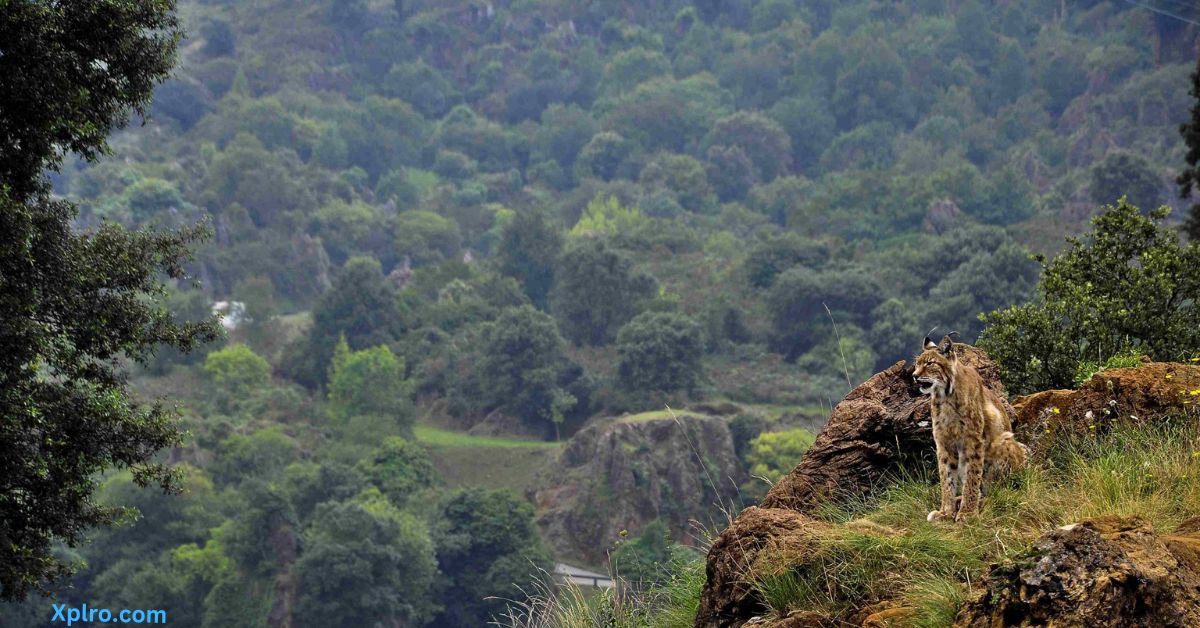Kerala’s Silent Valley, nestled within the mighty Western Ghats, is a sanctuary of raw wilderness and untouched beauty. This captivating national park, famed for its incredible biodiversity and emerald landscapes, provides a tranquil escape from the daily grind.
Silent Valley is a haven for nature lovers, wildlife photographers, and eco-tourists, teeming with diverse flora and fauna, including a wealth of rare and endangered species. As you explore the dense forests, peaceful valleys, and sparkling streams, you’ll be immersed in the true essence of Kerala’s natural wonders.
How to reach:
Train: The nearest train station is Palakkad Junction, roughly 60 kilometers away. Taxis and public buses are available from Palakkad to reach the park.
Road: Silent Valley boasts good road connectivity to cities within Kerala and neighboring states. Here’s a breakdown of some major routes:
- Palakkad: The drive from Palakkad takes about 2 hours via NH966 and Mannarkkad-Mukkali Road (approximately 60 kilometers).
- Coimbatore: The journey from Coimbatore takes roughly 3 hours via NH948 and SH78 (around 100 kilometers).
- Kochi: Expect a 5-hour drive from Kochi via NH544 and NH966 (approximately 200 kilometers).
Bus: Regular buses connect major cities like Palakkad, Coimbatore, and Kochi to Mannarkkad, the closest town to Silent Valley. From Mannarkkad, taxis or local buses can take you to Mukkali, the park’s entry point.
Exploring the Park: Private vehicles aren’t allowed inside Silent Valley. Jeeps are the way to go! The forest department offers guided jeep safaris that navigate you through the park’s dense forests and breathtaking landscapes.
Best time to visit:
Post-Monsoon (September to November):
- Weather: Pleasant and mild with occasional showers.
- Upsides: Vibrant and flourishing plant life, waterfalls at their peak, ideal for trekking and wildlife spotting.
- Downsides: Some trails might still be a little slippery.
- Recommendation: Arguably the best time to visit, as the park is bursting with beauty.
Winter Season (December to February):
- Weather: Cool and dry, with temperatures ranging from 15°C to 25°C.
- Upsides: Perfect weather for outdoor activities, clear skies offer excellent wildlife viewing.
- Downsides: Early mornings and evenings can be a bit chilly.
- Recommendation: Ideal for a comfortable and enjoyable visit.
Summer Season (March to May):
- Weather: Warm to hot, with temperatures reaching up to 35°C.
- Upsides: Clear skies, good for wildlife viewing as animals gather around water sources.
- Downsides: Can be quite hot during the day, some water sources might dry up.
- Recommendation: Suitable for wildlife enthusiasts who don’t mind the heat.
Attractions:
Silent Valley Peak:
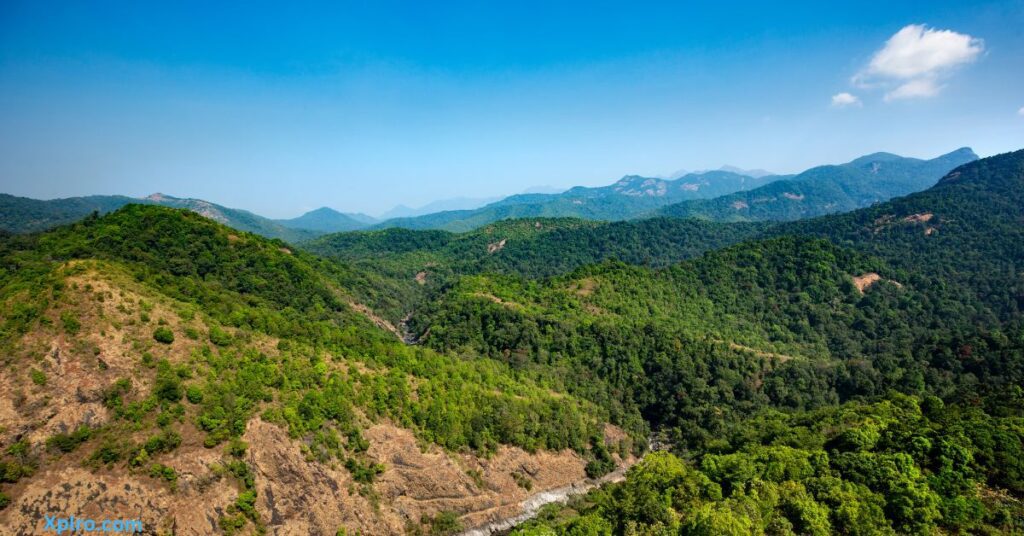
Reaching Silent Valley Peak is a true test for trekkers, but the rewards are more than worth the effort. As the park’s highest point, the peak boasts jaw-dropping panoramic vistas of the sprawling valleys and majestic mountains below. The trek itself is an adventure, taking you through dense, vibrant forests and challenging terrain. It’s a chance to witness the park’s incredible biodiversity firsthand, with the landscape and wildlife changing dramatically as you ascend. The journey is as captivating as the summit – the ever-evolving scenery and diverse plant and animal life will keep you enthralled every step of the way. Finally, upon reaching the peak, the sense of accomplishment and the breathtaking panorama before you will leave you speechless. Silent Valley Peak stands as a powerful symbol of the park’s pristine beauty, offering a glimpse into a world where nature remains untamed.
Kunthi River:
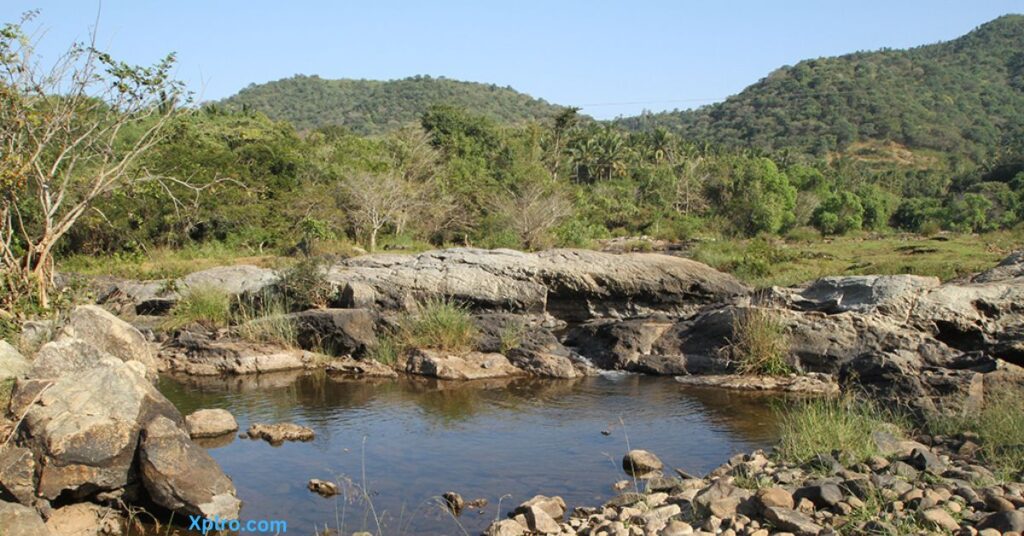
The Kunthi River winds its way through Silent Valley National Park like a sparkling ribbon, adding a touch of magic to this already captivating landscape. Born in the lofty Nilgiri Hills, this pristine river carves a path through the dense forest, its crystal-clear waters gurgling gently over smooth stones. The sound is like a natural soundtrack, enhancing the tranquility of the valley. Lush greenery carpets the riverbanks, creating a picture-perfect backdrop for nature walks and moments of quiet reflection.
Sairandhri:
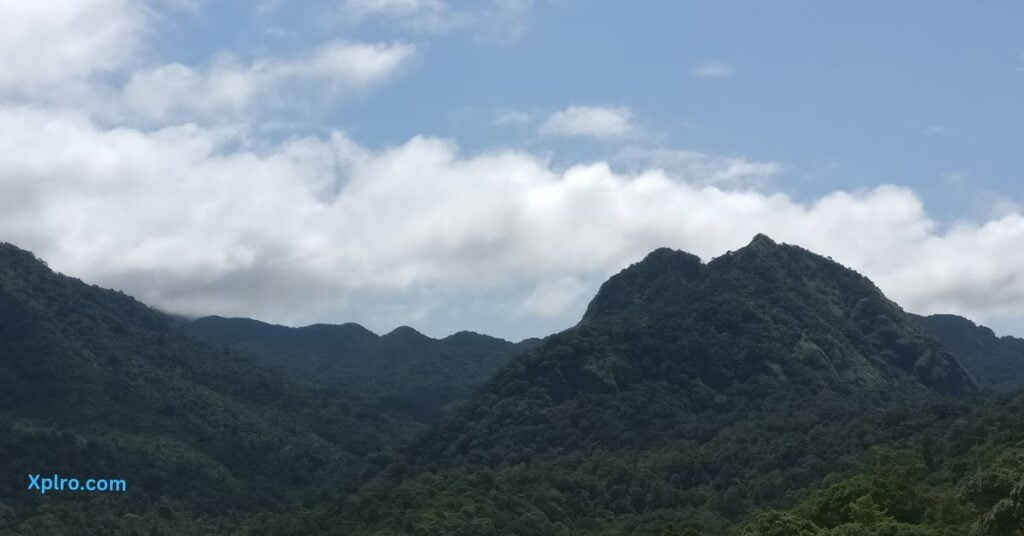
Sairandhri isn’t just the entrance to Silent Valley National Park; it’s a captivating introduction to its wild heart. Nestled amidst verdant hills, this place serves as a taster of the park’s rich biodiversity and breathtaking beauty. The Sairandhri Watchtower stands tall, offering a panoramic vista that sweeps across the dense forest canopy and the meandering Kunthi River below. From this lookout point, visitors can truly grasp the vastness and untouched beauty of the valley. Sairandhri buzzes with activity – forest guides and naturalists are eager to share their knowledge and lead you deeper into the park. As you set off from here, the sights and sounds of the forest come alive, promising an unforgettable journey into one of India’s most well-preserved natural sanctuaries.
Mukkali:
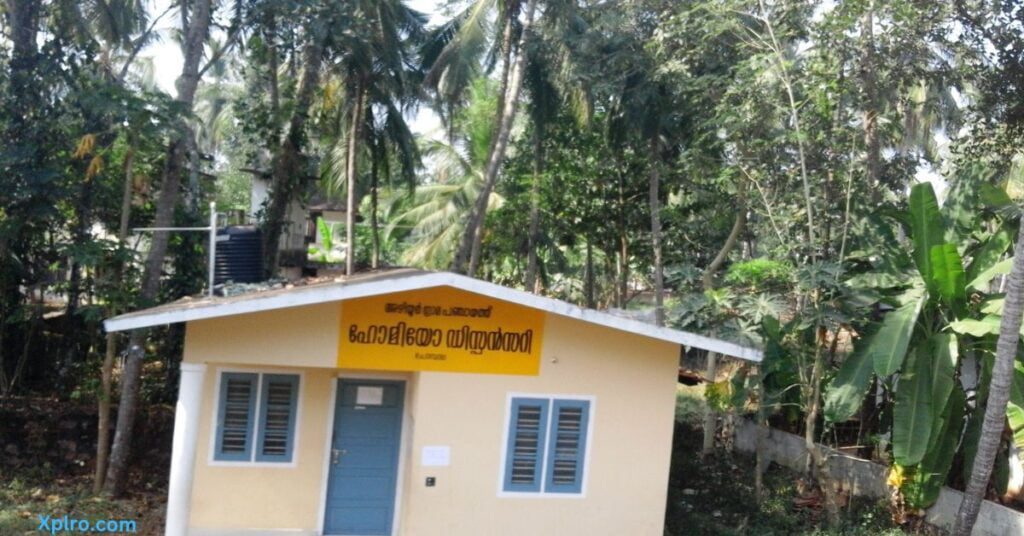
Mukkali is the launchpad for your Silent Valley adventure. This lively village serves as the park’s base camp, offering essential amenities and information before you delve into the wilderness. Located just outside the park boundary, Mukkali is where your journey into the heart of Silent Valley begins. The visitor information center here is a treasure trove of knowledge about the park’s unique ecosystem, its diverse plant and animal life, and the ongoing conservation efforts. Mukkali is the starting point for guided jeep safaris and treks, ensuring a safe and responsible exploration of the park. Lush greenery surrounds the area, and the sounds of the forest create a calming ambience. More than just a logistical hub, Mukkali allows visitors to ease into the natural surroundings, making it an essential part of the Silent Valley experience.
Local Experiences:
Guided Nature Walks: Explore the park’s rich tapestry of life with knowledgeable local guides. Learn about unique plants and animals, from medicinal herbs to rare orchids, and discover hidden gems and scenic spots on foot.
Jeep Safaris: Embark on an exciting jeep adventure through dense forests. Spot wildlife like the elusive lion-tailed macaque, the acrobatic Nilgiri langur, and the Malabar giant squirrel. Experience the park’s diverse landscapes from the comfort of a guided jeep.
Bird Watching Tours: Join expert naturalists on bird watching tours. Observe over 200 resident and migratory bird species, with early mornings and late afternoons offering the best sightings.
Butterfly Watching: Witness a vibrant butterfly spectacle with over 150 documented species. See these colorful creatures flitting among wildflowers and learn about their fascinating behaviors.
Cultural Interactions: Immerse yourself in the local way of life by visiting nearby tribal villages. Interact with indigenous communities, discover their traditions, and learn about unique crafts, music, and dance forms.
Picnics by the Waterfalls: Relax and rejuvenate with a picnic by one of Silent Valley’s many scenic waterfalls. Soak in the serene atmosphere and picturesque surroundings, perfect for a family outing or a romantic escape.
Photography Tours: Capture the essence of Silent Valley with guided photography tours. Focus on diverse wildlife, stunning landscapes, and vibrant flora, making these tours ideal for both amateur and professional photographers.
Trekking Expeditions: Challenge yourself with treks into the heart of the park. Popular routes include the Silent Valley Peak ascent and the Sairandhri to Poochipara trail. Experience the thrill of trekking through dense forests and rugged terrain.
Camping Adventures: Get up close with nature by camping in designated areas. Enjoy the symphony of the forest and the clear night sky, ideal for adventure seekers and nature enthusiasts.
Educational Programs: Participate in educational programs and workshops conducted by park authorities. Learn about conservation efforts, sustainable practices, and the importance of biodiversity.
Travel tips:
Packing Essentials:
- Clothing: Light, comfortable clothes for trekking and outdoor activities are key.
- Footwear: Pack sturdy, waterproof shoes for uneven and potentially wet terrain.
- Rain Gear: Consider a raincoat or umbrella, especially during the post-monsoon season.
- Health & Safety: Bring any essential medications and a basic first-aid kit. Insect repellent is a must!
- Hydration: Stay hydrated, especially on treks. Pack plenty of water.
Wildlife & Environment:
- Respect Wildlife: Maintain a safe distance from animals and avoid disturbing their habitat. Don’t feed them, as it disrupts their natural behavior.
- Leave No Trace: Take all your waste with you and dispose of it properly. Embrace eco-friendly practices like using reusable water bottles and opting for plastic alternatives. Stick to designated trails to minimize your environmental impact.
Photography Enthusiasts:
- Capture the Magic: Bring a good camera with extra batteries and memory cards.
- Follow the Rules: Respect park photography guidelines, especially regarding flash usage and proximity to wildlife.
Local Culture:
- Be Mindful: Respect the local culture and traditions of nearby tribal communities. Interact politely and seek permission before taking photographs of people or their properties.
Staying Connected:
- Limited Connectivity: Mobile network coverage might be limited within the park. Inform someone about your plans and expected return time. Download offline maps for navigation in case of limited service.
Food & Accommodation:
- Pack Snacks: Food options within the park are limited, so pack snacks and light meals.
- Sustainable Stays: Consider booking eco-friendly lodges or campsites that support sustainable practices.
Emergency Preparedness:
- Important Contacts: Note down important contact numbers, including park authorities, local guides, and emergency services.
- In Case of Emergency: If an emergency arises, contact the park office or the nearest forest department outpost.
Conclusion
Kerala’s Silent Valley National Park beckons nature lovers, adventure seekers, and wildlife enthusiasts with its untouched beauty. Explore rich biodiversity, serene landscapes, and the tranquil Kunthi River. Take in panoramic vistas from Sairandhri Watchtower, trek through dense forests, spot exotic wildlife, or simply soak in the peaceful ambiance. Silent Valley promises an unforgettable experience. Plan your responsible visit with our detailed guide at [Xplro.com]– permits, packing tips, and must-do activities included. Let Silent Valley ignite your passion for conservation and inspire a deeper appreciation for our planet.
FAQs
What is the best time to visit Silent Valley?
- The ideal time to visit Silent Valley is from September to March when the weather is pleasant, suitable for trekking and wildlife observation.
How can I reach Silent Valley National Park?
- Silent Valley is accessible by road from major cities such as Coimbatore (approximately 65 km away) and Palakkad (about 55 km away). The nearest railway station is Palakkad, and the closest airport is Coimbatore International Airport. From these points, taxis or buses can be hired to reach the park.
Do I need a permit to enter Silent Valley National Park?
- Yes, visitors require permits from the Kerala Forest Department. Permits can be obtained at the park’s entry points or through the official website of the department.
What are the accommodation options near Silent Valley?
- Accommodation options near Silent Valley include forest guesthouses, eco-lodges, and resorts located in nearby towns like Mukkali and Mannarkkad. It is advisable to book in advance, especially during peak seasons.
Are guided tours available in Silent Valley?
- Yes, guided tours and jeep safaris are available and recommended to enhance the experience and ensure safety. Local guides are knowledgeable about the park’s flora, fauna, and trails.
What should I pack for a trip to Silent Valley?
- Essential items to pack include lightweight and comfortable clothing, sturdy waterproof footwear, a raincoat or umbrella, insect repellent, a basic first-aid kit, reusable water bottles, snacks, and a camera with extra batteries and memory cards.
Is it safe to trek in Silent Valley?
- Yes, trekking in Silent Valley is safe when accompanied by a guide and sticking to designated trails. Always inform someone about your trekking plans and expected return time.
Can I see wildlife in Silent Valley?
- Yes, Silent Valley is home to diverse wildlife, including the lion-tailed macaque, Nilgiri langur, Malabar giant squirrel, and over 200 bird species. Wildlife sightings are common during guided tours and treks.
Are there any restrictions for visitors in Silent Valley?
- Visitors must adhere to park regulations, including not disturbing wildlife, avoiding littering, staying on designated trails, refraining from using plastic, and observing restrictions on flash photography in certain areas to protect wildlife.
What are the main attractions in Silent Valley National Park?
- Key attractions include the Kunthi River, Sairandhri, Mukkali, various trekking trails, waterfalls, and the diverse flora and fauna, each offering a unique experience of the park’s natural beauty.
Can I visit nearby tribal villages?
- Yes, visiting nearby tribal villages is possible and provides an opportunity to experience local culture and traditions. Interact respectfully with indigenous communities and learn about their way of life.
How can I contribute to conservation efforts in Silent Valley?
- You can contribute by practicing eco-friendly behaviors during your visit, supporting local conservation initiatives, educating yourself about the park’s ecosystem, and raising awareness about the importance of preserving such natural habitats.




